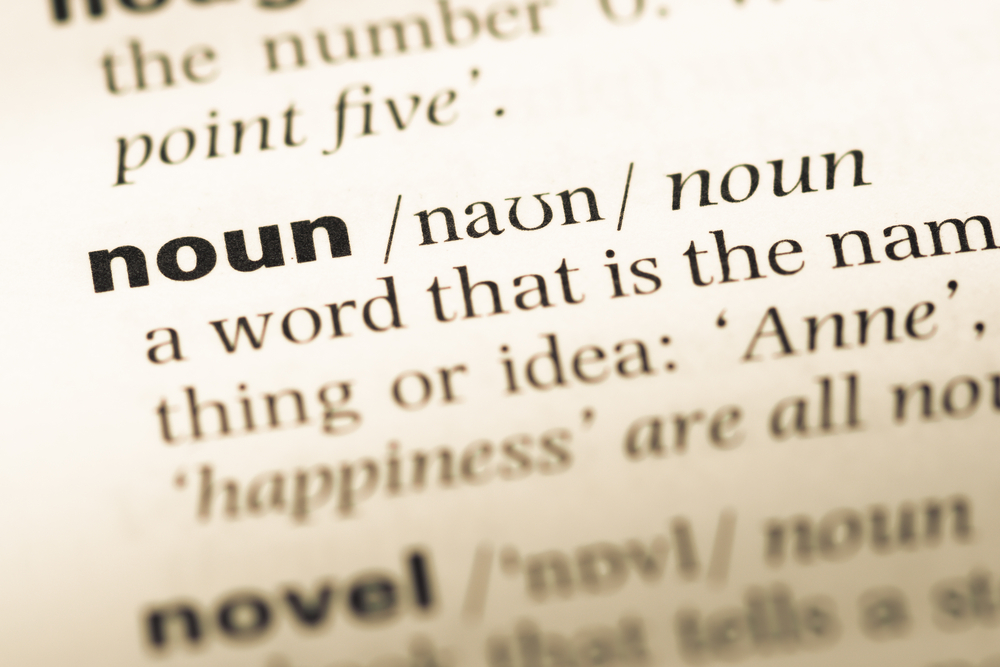Comparing Fractions Normal Worksheets for Ages 6-9
5 filtered results
-
From - To
Discover our engaging Comparing Fractions Normal Worksheets designed specifically for children aged 6-9! These expertly crafted worksheets introduce young learners to the foundational concept of comparing fractions through fun and interactive activities. Each worksheet encourages critical thinking and problem-solving skills as students learn to identify and compare fraction sizes, enhancing their mathematical understanding. With vibrant illustrations and age-appropriate challenges, children will find joy in learning how to handle fractions confidently. Perfect for home or classroom use, these worksheets provide an essential resource for educators and parents alike, ensuring children build a solid mathematical foundation while developing a love for learning!
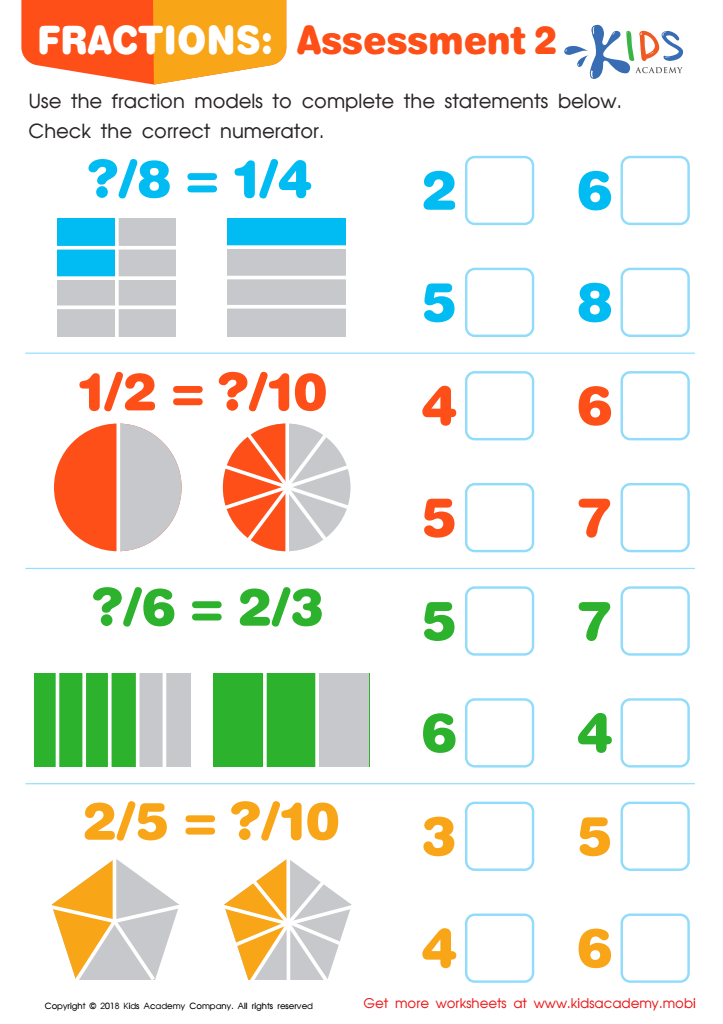

Fractions: Assessment 2 Worksheet
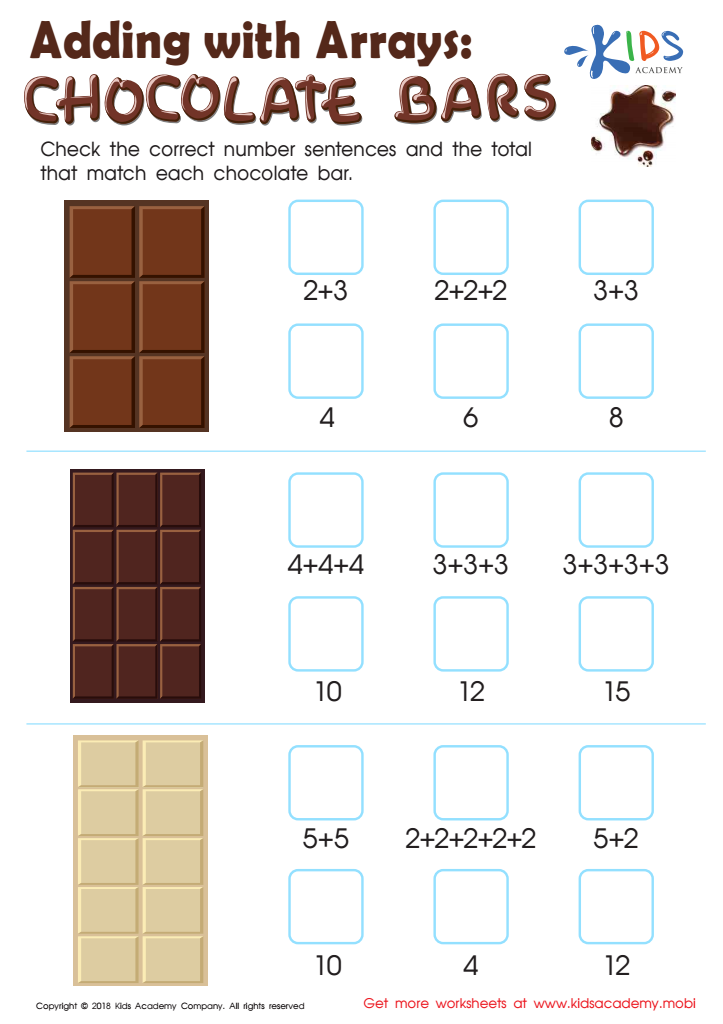

Adding with Arrays: Chocolate Bars Worksheet
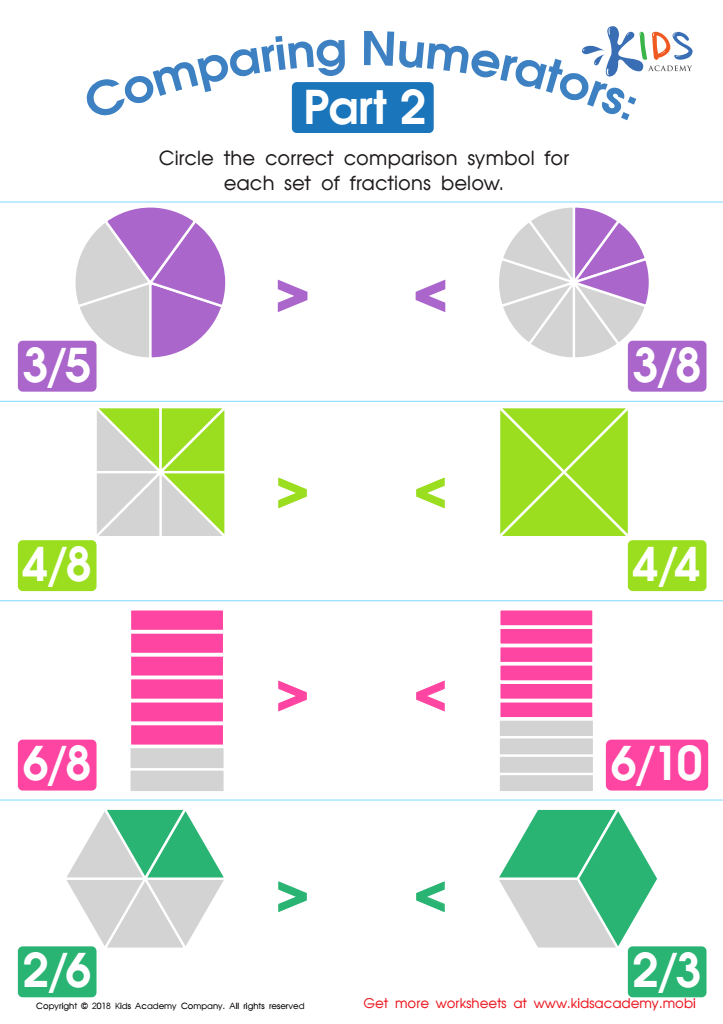

Comparing Numerators Part 2 Worksheet
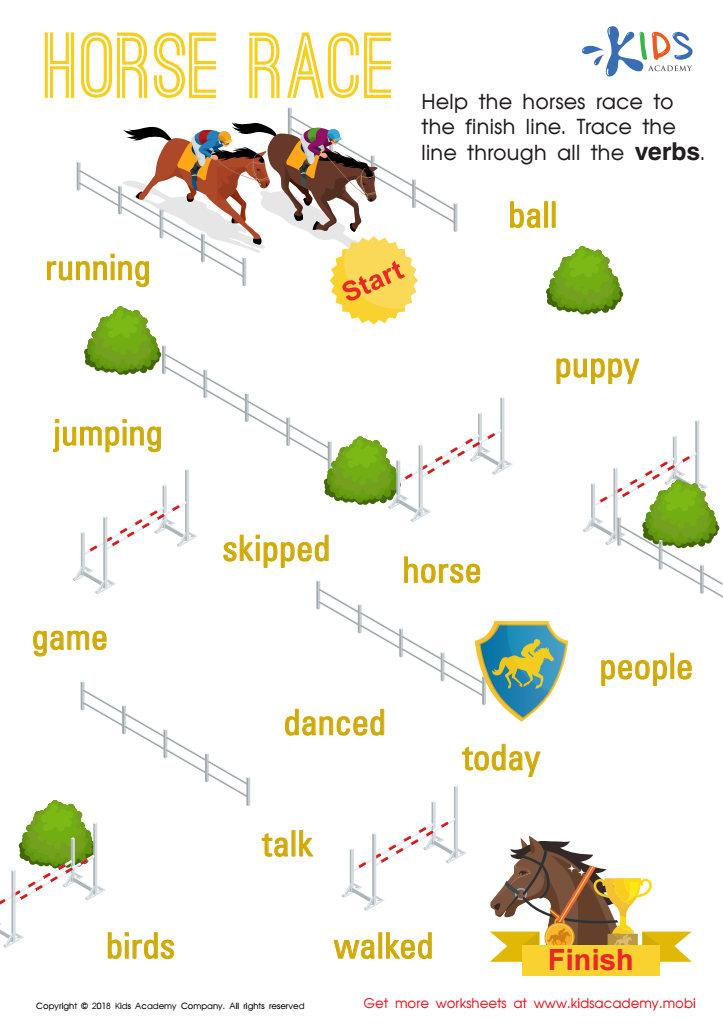

Horse Race Worksheet


Compare Fractions Worksheet
Understanding how to compare fractions is a crucial skill for children ages 6-9, as it lays the foundation for more advanced mathematical concepts. Both parents and teachers should prioritize this topic because it strengthens a child's logical reasoning and problem-solving abilities.
When children learn to compare fractions, they develop a better understanding of part-whole relationships, which helps in various everyday situations, such as sharing food or measuring ingredients. Furthermore, grasping fraction comparison can enhance a child’s confidence in math, a subject that often causes anxiety for many students.
The ages 6-9 are critical in cognitive and language development. During these years, children are beginning to grasp abstract concepts, making it an ideal time for introducing fractions. Engaging with real-world examples can make comparisons relatable and intuitive.
Improving these skills not only supports math education but also strengthens essential critical thinking and decision-making abilities. Parents and teachers can guide these young learners through interactive activities, games, and discussions to promote persistent engagement. By emphasizing the importance of comparing fractions, adults can foster a positive attitude toward mathematics for their children or students, empowering them for future academic success.
 Assign to My Students
Assign to My Students







